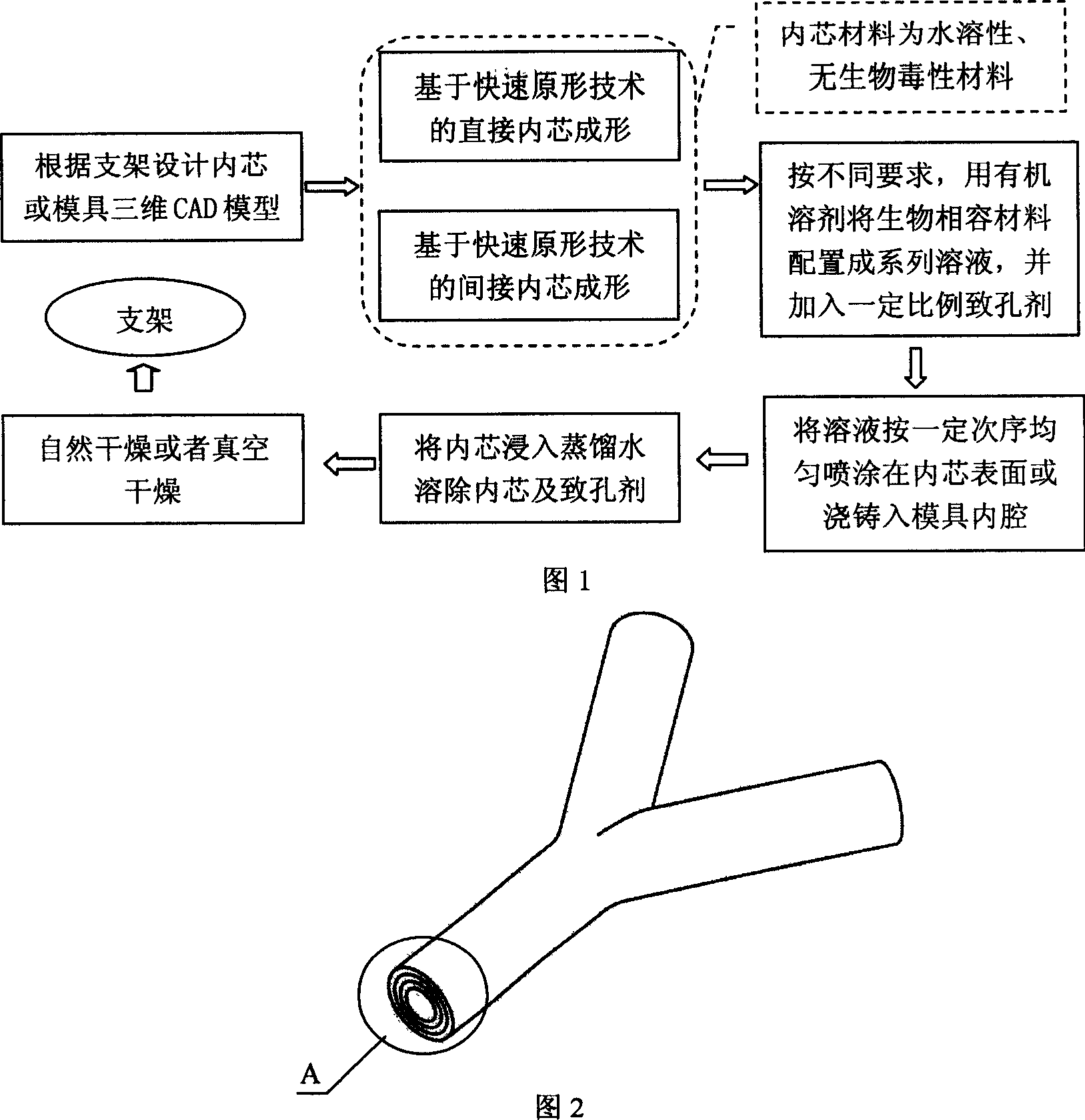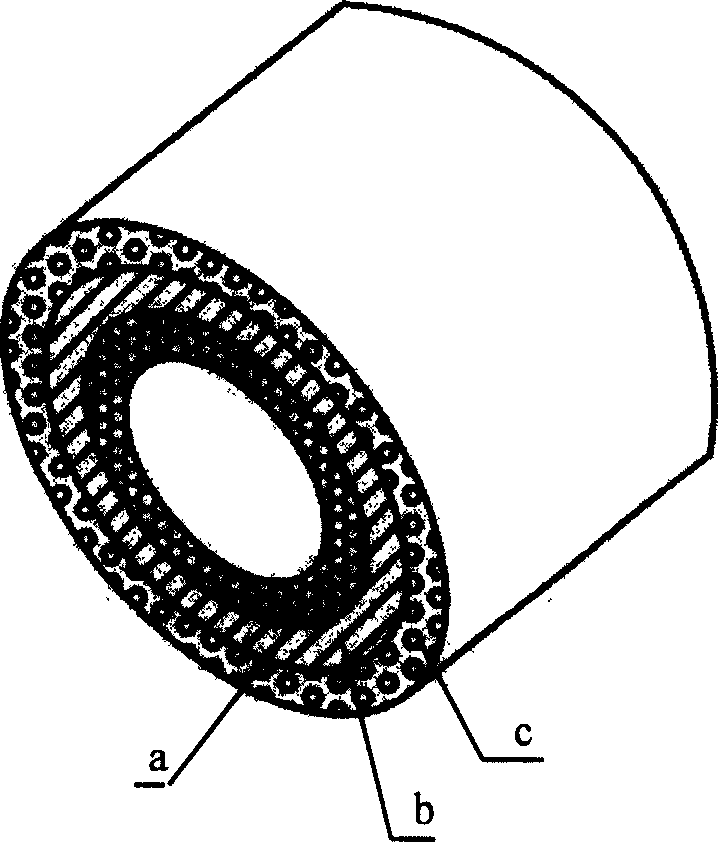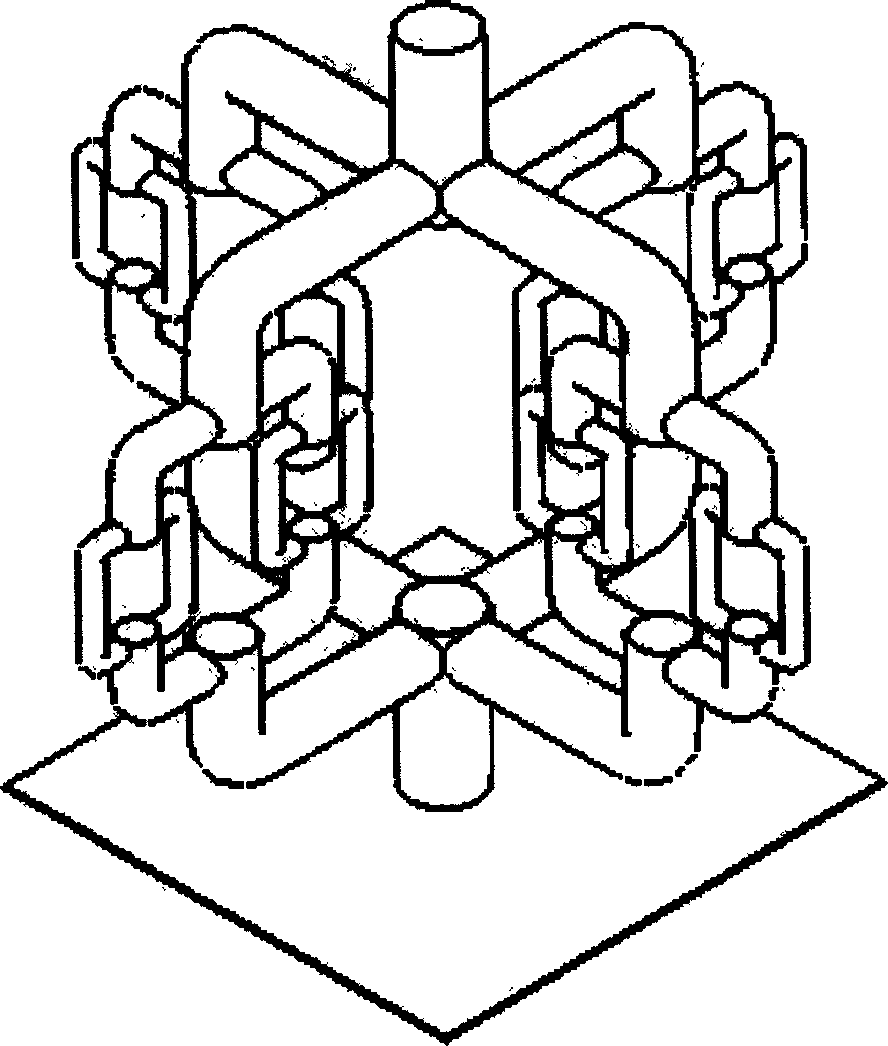Tissue engineering complex grid shape stent forming method base on core dissolving technology
A technology of tissue engineering and mesh scaffolds, which is applied in the field of forming complex tubular mesh scaffolds in tissue engineering, can solve the problems of inability to form spatial mesh structures, complex tubular mesh scaffold forming methods, and limited types of formable materials, etc., to achieve Rapid forming, large processing capacity and wide range of applicable materials
- Summary
- Abstract
- Description
- Claims
- Application Information
AI Technical Summary
Problems solved by technology
Method used
Image
Examples
Embodiment 1
[0035] In a certain tissue engineering, a tube network-like carrier tubular scaffold with a planar bifurcated structure is required. The maximum diameter of the "trunk" is 3mm, and there are two bifurcated structures under the trunk, and the bifurcation diameter is 3mm. The tube wall of the stent has a three-layer structure. The inner wall needs a microporous structure with a pore size of 70um, a porosity of about 90%, and the material is PLGA. The outer wall needs a microporous structure with a pore size of 120um, a porosity of about 75%, and the same material as the inner layer. The middle layer has no microporous structure, and the material is PCL-PET multi-block copolymer.
[0036] (1) Design the inner core of the stent. Use SolidWorks 3D CAD software to design the 3D structure of the inner core, and export the CAD model of the stent inner core as an STL file format.
[0037] (2) The inner core is made by melt extrusion process (MEM process). The core forming material ...
Embodiment 2
[0053] Three-dimensional block-like scaffolds with inner tube networks were prepared. The bracket has interconnected internal pipe network inside. The pipe network in the stent has a three-layer spatial bifurcation structure and four pipe diameters, the diameters of which are 1200 μm, 900 μm, 600 μm, and 300 μm in sequence. The shape of the inner pipe network is as image 3 shown. The manufacturing process of the bracket is as follows:
[0054] (1) According to the shape of the inner pipe network, use Solidworks software to design the inner core of the inner pipe network. According to the appearance and shape of the stent, design the outer contour and inner core of the stent. And export the obtained models as STL files respectively. The shape of the inner core of the inner pipe network is as follows: Figure 4 shown
[0055] (2) The inner core of the inner pipe network is formed indirectly based on the stereolithography process.
[0056] First, the inner core of the inn...
Embodiment 3
[0066] Preparation of common bile duct stent with planar bifurcation structure. The macroscopic structure of the stent is a main pipe with an inner diameter of 9mm, and two bifurcations with inner diameters of 8mm and 6mm are separated from the face. The tube wall requires no microporous structure, and the scaffold forming material is PLLGA.
[0067] (1) Design the inner core of the stent. Use SolidWorks 3D CAD software to design the 3D structure of the inner core, and export the CAD model of the stent inner core as an STL file format.
[0068] (2) Direct forming of the inner core based on the melt extrusion process.
[0069] The MEM250-II melt extrusion molding system produced by Beijing Yinhua Laser Rapid Prototyping and Mold Technology Co., Ltd. was used to make the outer contour support of the stent. The forming material is a mixture of maltose, glucose and sucrose. The main process parameters adopted are: layer thickness 0.20mm, scanning speed 23mm / s.
[0070] (3) 1 ...
PUM
| Property | Measurement | Unit |
|---|---|---|
| Aperture | aaaaa | aaaaa |
| Particle size | aaaaa | aaaaa |
| Aperture | aaaaa | aaaaa |
Abstract
Description
Claims
Application Information
 Login to View More
Login to View More - R&D
- Intellectual Property
- Life Sciences
- Materials
- Tech Scout
- Unparalleled Data Quality
- Higher Quality Content
- 60% Fewer Hallucinations
Browse by: Latest US Patents, China's latest patents, Technical Efficacy Thesaurus, Application Domain, Technology Topic, Popular Technical Reports.
© 2025 PatSnap. All rights reserved.Legal|Privacy policy|Modern Slavery Act Transparency Statement|Sitemap|About US| Contact US: help@patsnap.com



